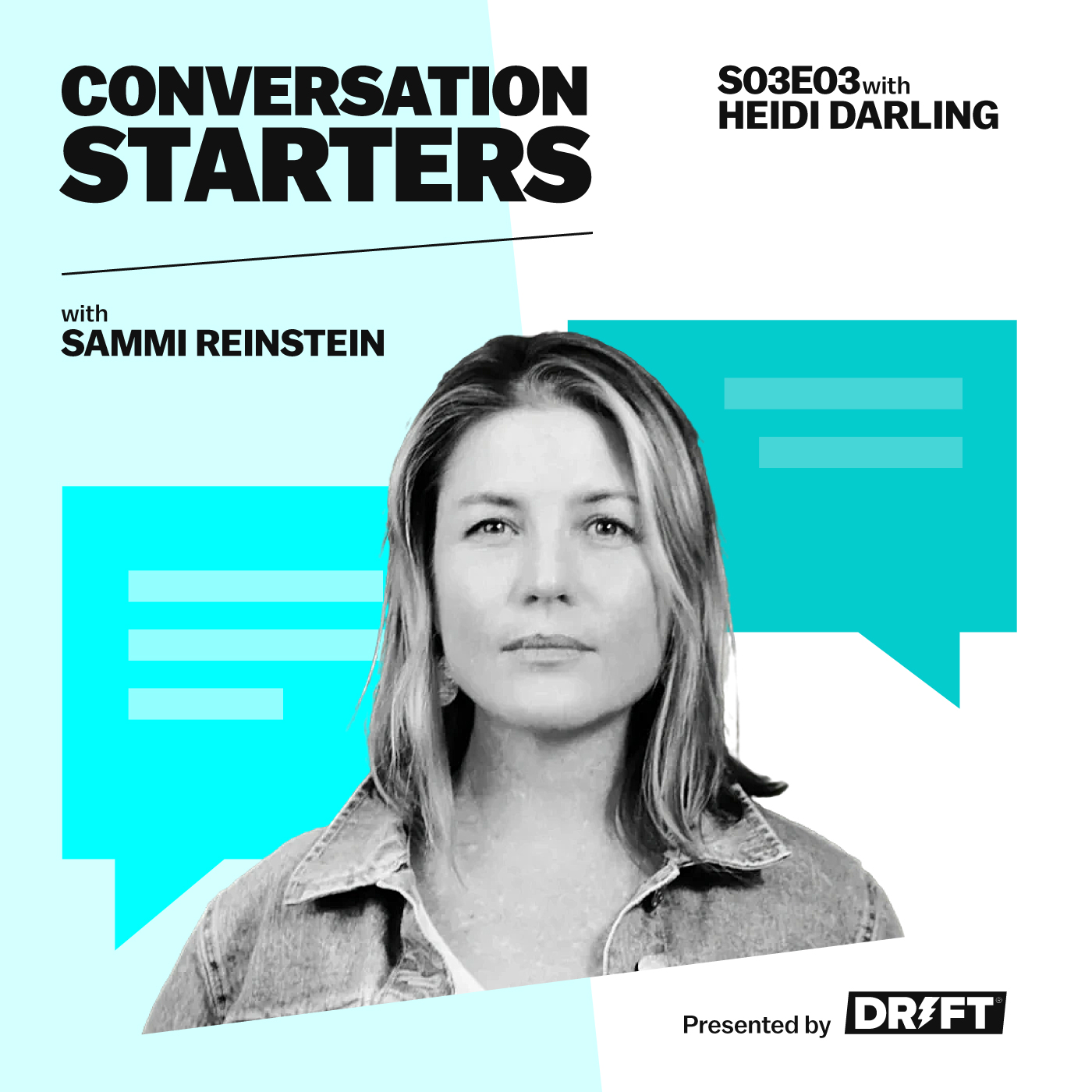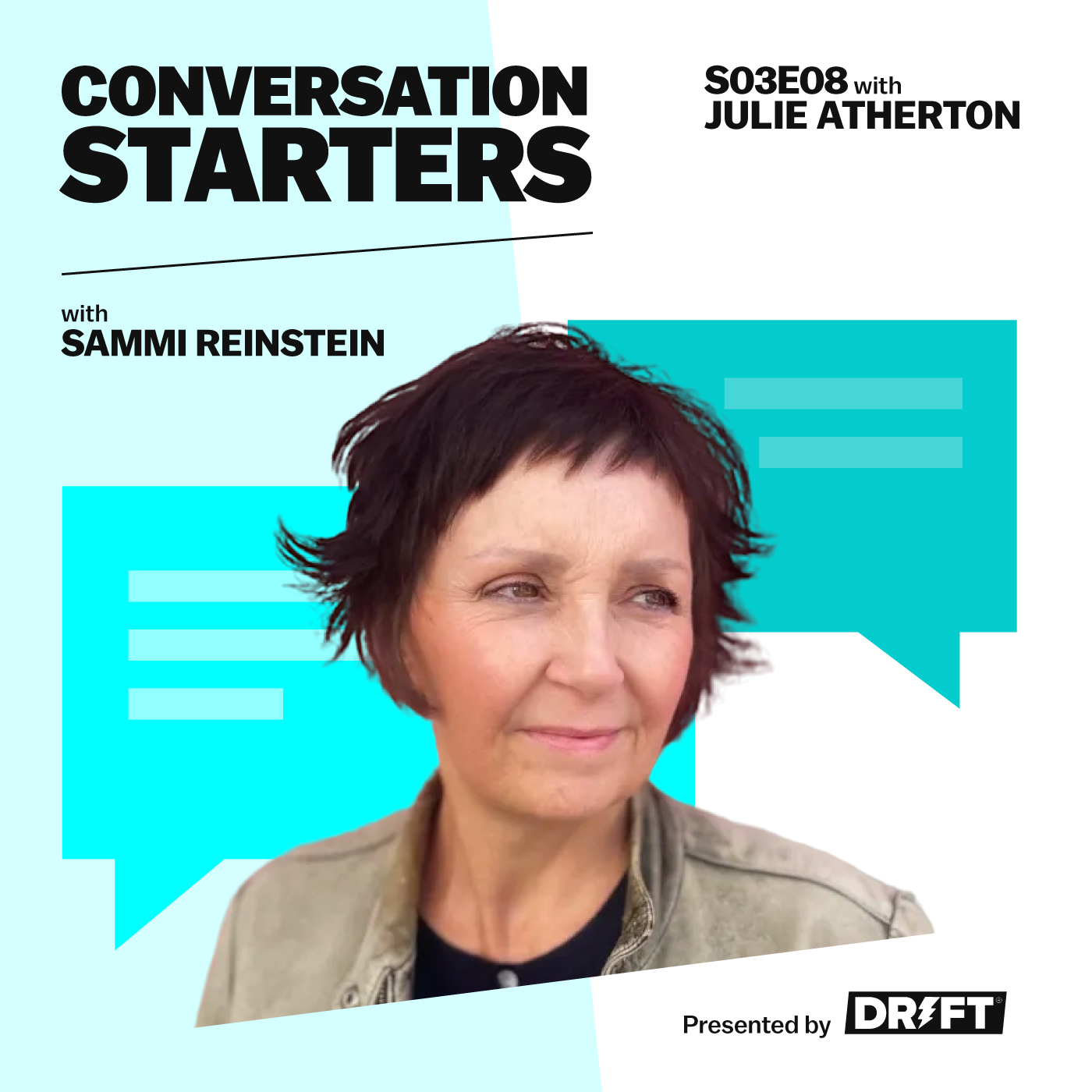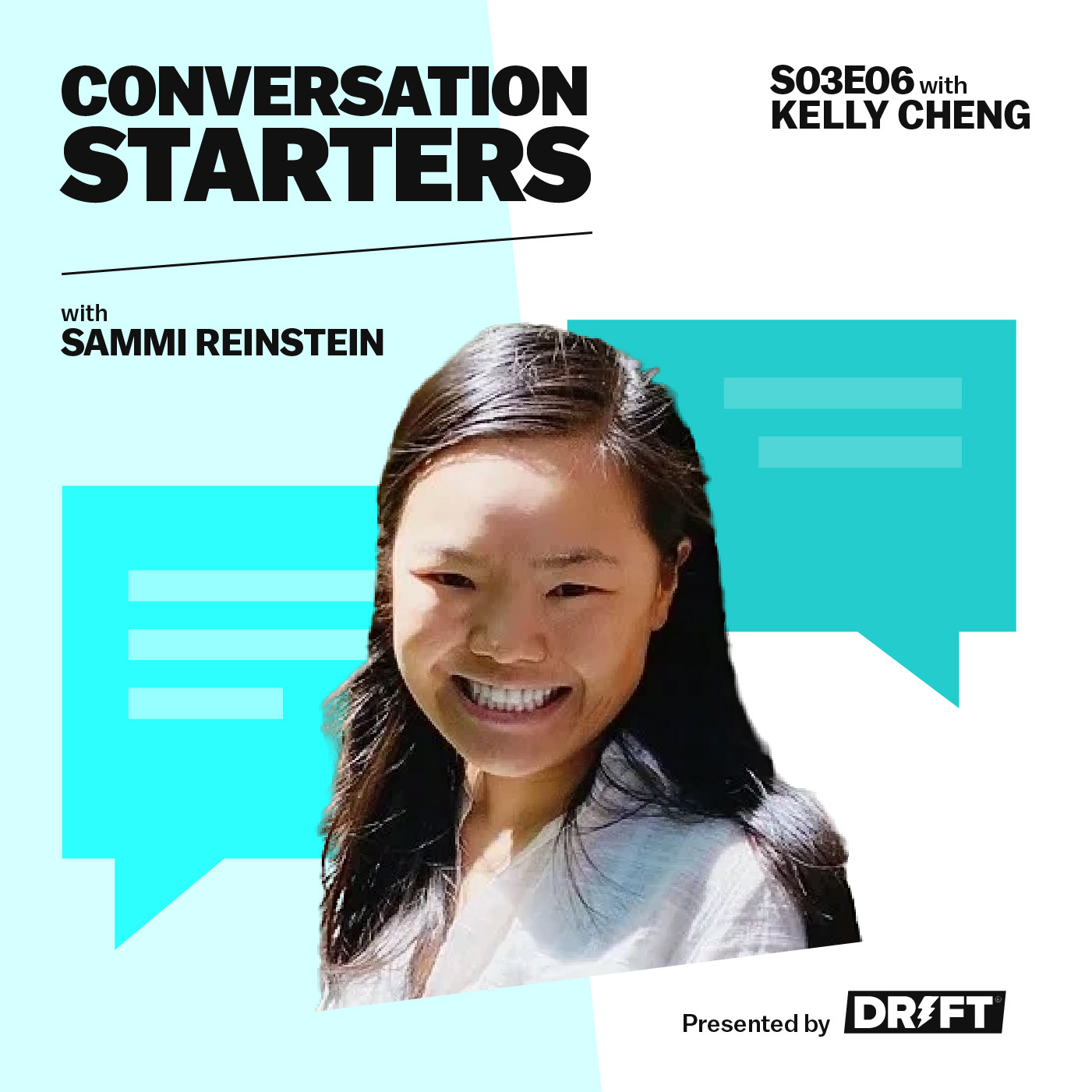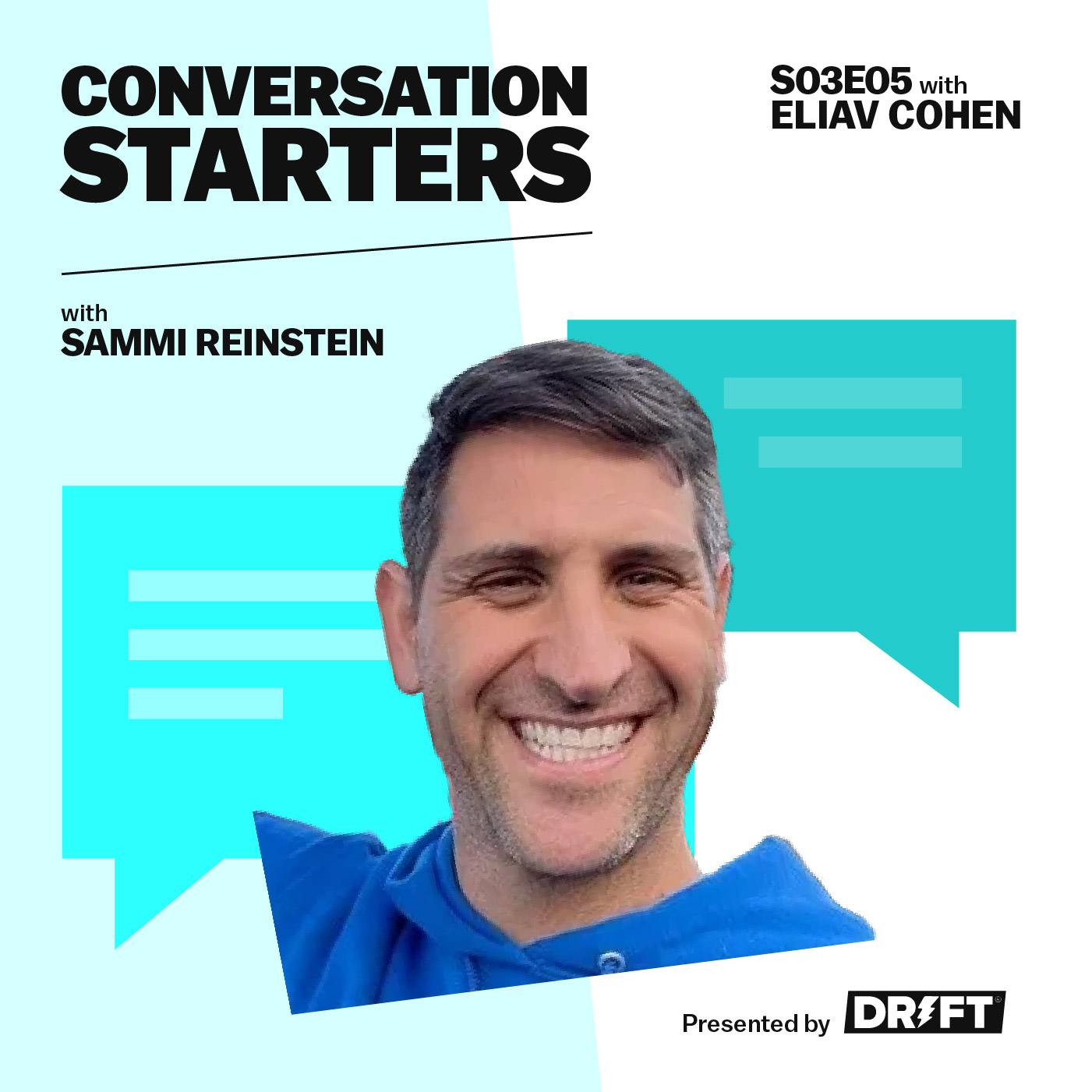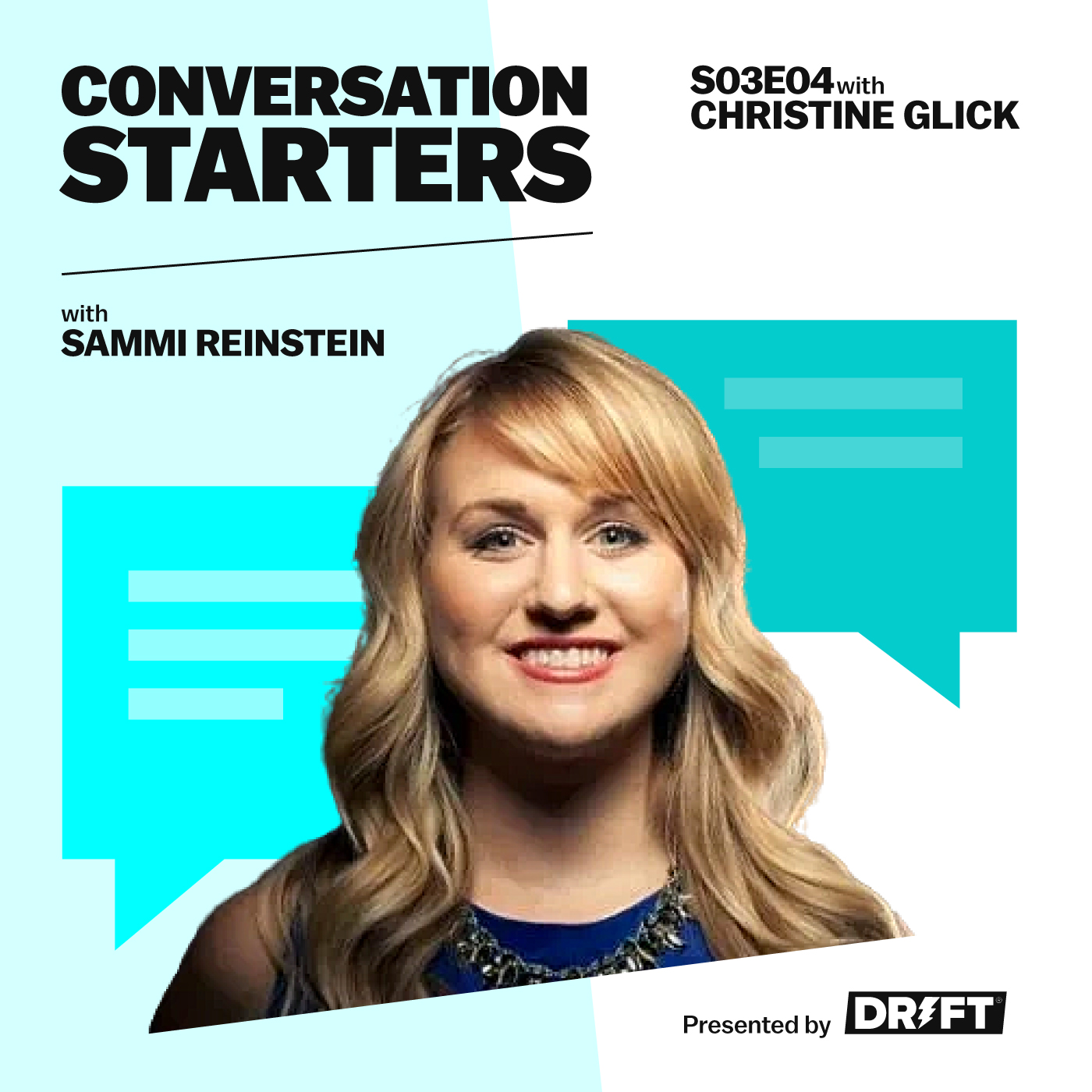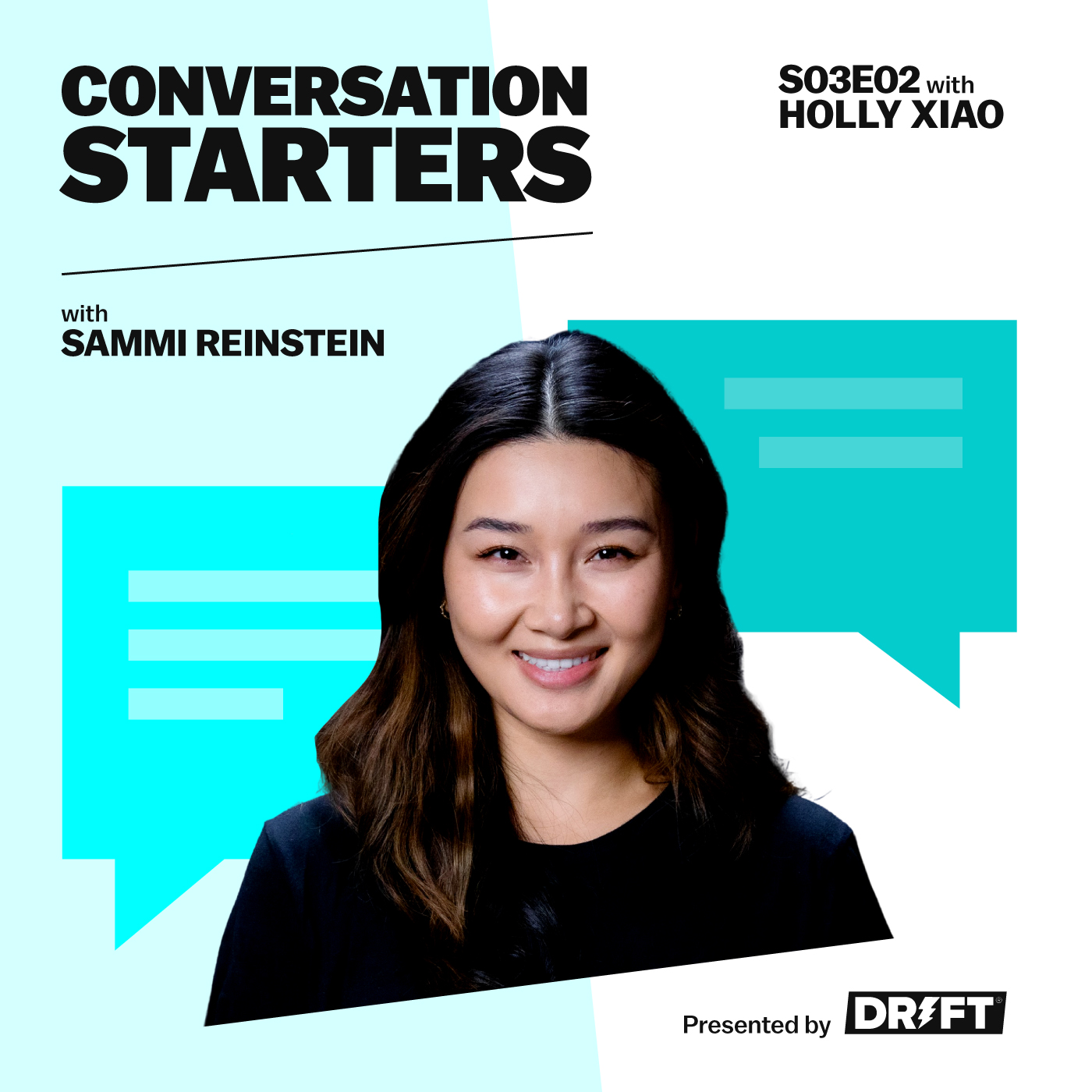3.3: How Sales + Marketing Can Work Together to Keep the Conversation Flowing (Heidi Darling)
- 0.5
- 1
- 1.25
- 1.5
- 1.75
- 2
Sammi Reinstein: Hey, this is Sammi Reinstein, and you're listening to Conversation Starters. On this show, we talk all about bringing conversations back to B2B marketing and selling, because if there's one thing we know about doing business in the revenue era, it's that the best customer experience wins.
Speaker 2: Season three of Conversation Starters is brought to you by Really Good Sales Plays, a landing page built to inspire your sales team whether they're inbounding, outbounding, or managing a deal. These plays are proven to generate pipeline and close deals so you can celebrate more wins. Check them out at drift. ly/ salesplays. Now to the episode. Sammy, if you could leave for vacation tomorrow, anywhere in the world, where would you go?
Sammi Reinstein: Wow, that's a big question. I think I would go to Thailand because my brother's there right now and he's backpacking. I would just probably join him on his backpacking journey.
Speaker 2: Wow, so you think you'd go solo and then meet up with him?
Sammi Reinstein: I think I'd probably meet up with him and then go solo.
Speaker 2: Okay. Well, as long as you two are aligned on your journey and where you go, where you stay, that sounds like a great trip. Nothing's worse than going on a trip and your travel partner is just not what you expect.
Sammi Reinstein: No, that's very true. I do think that traveling can make or break a relationship.
Speaker 2: 100%. This past spring on my sabbatical, I went with one of my best friends from college who had briefly traveled before, but we were together for 10 days in Europe and then met up with my sister. Both of them went fine, but the way they travel is so different, and it's really that open communication I've found is key to not getting lost in a random city.
Sammi Reinstein: Speaking of alignment. inaudible.
Speaker 2: Today's guest is someone who definitely knows a thing or two about sales and marketing alignment and loves talking about it.
Sammi Reinstein: Yes, Heidi Darling is the chief marketing officer for ROI DNA, a full service digital marketing agency. As a self- proclaimed account based experience evangelist, Heidi knows a thing or two about what it takes to keep a conversation going, depending on who you're talking to, having the right conversation at the right place, at the right time. On this episode, Heidi's going to talk to us about how go to market teams can work together to keep the conversation moving. Let's get into it. Heidi, thank you so much for coming on Conversation Starters.
Heidi Darling: That's so awesome to be here. Thank you for having us.
Sammi Reinstein: Of course. Before we get started, the podcast title is called Conversation Starters, so of course I have to ask you a conversation starter ourselves.
Heidi Darling: inaudible.
Sammi Reinstein: For today, the conversation starter... Yes, exactly. Where is your dream vacation destination?
Heidi Darling: So many, so little time. I'm going to say, I went to Greece last year and I was blown away, just by... depending on who you talk to, 400 to 1,000 different islands, and I felt like I had just scratched the tip of that, so I would probably go back.
Sammi Reinstein: I would love to go to Greece. I'm a big tomato and feta person, so I feel like it's just meant to be, I have to go.
Heidi Darling: The food is bananas. You've got to get there.
Sammi Reinstein: Awesome. Diving in, and before we get to the real nitty gritty, I would love to learn a little bit more about you and ROI DNA.
Heidi Darling: I've grown up in the ranks of tech marketing, worked my way up. Most recently, been head of marketing or CMO, depending on the size of the startup. I helped take a robotics excess skeleton company public, so I've definitely spent most of my time in tech innovator space. I joined ROI DNA almost three years ago because I really believe that there is a new and emerging model for how we can go to market in a way that's much more integrated and cohesive and delivers the most value for our clients and for our prospects, and for our clients and for their prospects. ROI, it's a digital marketing agency with an ABX focus, and we really exist to scale enterprise companies, scale tech innovators. The way that we do that is by making sure that our clients are able to have the right conversation with the right people, at the right time, and keep that conversation going.
Sammi Reinstein: We definitely relate and resonate with that message, right place, right time, right conversations, especially this podcast, this Conversation Starters. Just digging in a little bit more on the agency side, what does it mean to be a full service digital agency?
Heidi Darling: I think what it means is we consider the entire journey, top of funnel, all the way through conversion, all the way through being a customer. We believe in going in and adding the most value where we can. Typically that means if we're starting at the beginning of the go to market motion, then we'll develop go to market strategy, then we'll put a media plan in place. We'll make sure that the MarTech stack is set up correctly. We'll make sure that you've got all your right tech integrations so that you really can have the right conversation at the right time and the right place, and you can continue to have it even after you're a customer. What that means is, essentially we offer digital strategy, digital advertising, web design, SEO and content strategy and design, CRO business insight data and reporting. We do it all. When we say we're a full stack or a full service digital marketing agency, that's what that means.
Sammi Reinstein: Awesome. Speaking of right conversation, to get there, a lot of what we see in terms of lead generation and pipeline, et cetera, to get there, you need to have really strong alignment between marketing and sales. I think that a lot of companies do a really good job at this and there's also a lot of obstacles there in between those two teams and really being truly aligned. At ROI DNA, how do your sales and marketing teams really work together to create that effective messaging and communication?
Heidi Darling: Well, there's two things. ROI sales and marketing teams, we're hand in glove. We're work side by side. We chat every day. We believe in delivering the most value. It's really about how we drive results for our clients. That's how ROI works together. But what I think might be more interesting for this conversation is how do we help our clients work together? There's a lot of things that go into that. First and foremost, that is the reason that we are an ABX agency, is because that drives alignment. Let's face it, the marketing ecosystem, you could even say the business ecosystem has radically changed over the past two years. Everyone needs to be on the hook. I would say marketing might agree that we're increasingly on the hook for revenue numbers, revenue KPIs, and that's not a bad thing because if we're all marching towards the same KPIs, we're all reporting on pipeline numbers, then that's the thing we start to care about week after week after week. That's one piece of it. The other piece of it I think that's really interesting in terms of this inaudible change that we're in is because everything went digital, for the first time we have access to this digital footprint of what went on to the sale, from top of funnel all the way to closed one. We've got this proliferation of data that runs across our entire org. We can all look at it and say, " Oh yes, we all see that that's what worked." I think there's two things. I think we're increasingly on the hook for the same KPIs, and we help our clients set those KPIs and set them up for success in that way, and then we are a data driven agency. We really leveraged data to help illuminate the full story and help optimize from it.
Sammi Reinstein: With that data, what are you looking at to change maybe your marketing, or change your messaging?
Heidi Darling: Sure. We can look at which ads converted more, we can look at which audiences converted more. Another thing that I neglected to mention before is just having sales and marketing work together on building out their target account lists and tiering and segmenting is a huge point of alignment as well. We can look at the data on audiences, we can look at data on time of day. We can look at data on where things get stuck in the funnel or in the pipeline. Every single data point that we look at, we can also look at, we can identify when things are broken, when the tracking's broken, and we can look at like at, oh, there's no one moving past this. Oh, that's a 404 error, which if you're using a chat bot, you deal less with. I think we look at data at each point. We look at time on page, we look at time that the video's viewed, whether it's five seconds or all the way through. We look at page depth, page scroll.
Sammi Reinstein: You mentioned target accounts. I'm curious, when you're creating that ABX strategy and thinking about target accounts, how are you encouraging marketing teams to work with their sales teams to make sure that all of those efforts are really being followed up with?
Heidi Darling: It's really about getting in a room and defining your ICP. What I see is, so often, well, it's two things. It's defining your ICP and then it's defining who's in your buyer committee. We know it's going to be between 10 and 20 people as part of that decision, and getting really specific with what each of those personas care about and how to message to them and how to deliver value to them at every step of the journey. When you can get sales and marketing, and I would even argue some amount of customer success in the room to say, " Actually these people, we have greater pipeline velocity or higher percentage of close one," versus the G 2000 or whatever, which we all joke is the wish list. We all want those people, but what are the actual clients that make sense for you to go after? It's important to have focus. It's important to have 5 or 10 in your one- to- one approach. It's important to have 20 to 30 in your one to few, and however many on your one to many. I think the importance of defining the ICP and the buying committee, and then getting really specific with why it makes sense for your specific value proposition.
Sammi Reinstein: Yeah, so finding what's in it for me for each of those people in the buying committee, which is huge these days. There are so many people in the room that you have to sell to. For marketers, that means a change, too.
Heidi Darling: Correct.
Sammi Reinstein: They have to really understand who may be in that buying committee and maybe change that ICP around as well.
Heidi Darling: It's such a process of learning too, because sales are in it every day and marketing might have some hypothesis around what's happening and we're all looking at the same data, so we're all pretty much on the same page. But then for me, it's so important to hear from the sales team. They're getting stuck here every time, or this just isn't really resonating in the way that we thought it was, or we thought the security vertical was really going to relate to this offering, but that we're just not getting any traction. It's that constant back and forth of information that's so important too.
Sammi Reinstein: Yeah, that relationship and that relationship building and having that trust there is so important. Then like you said, as marketers, we have a lot of hypotheses and a lot of assumptions, and then relying on that data to give us an ego check as well, make sure that it's all actually working in motion. With that data and bringing different types of tools in, what type of tech stack are you recommending these days for people to have for marketers and sales teams to rely on?
Heidi Darling: That's a great question. I think in part it's determined by the size of company that you are. We're not a fan of over engineering. We used to say that we are technology agnostic, but we can no longer afford to be technology agnostic. There are some clear market leaders. Obviously one of our premier partners is Drift. We absolutely need to have some sort of chat bot technology because to be competitive by 2025, there's universal agreement that you need to have a multi- service option. When you look at extending lifetime value or building on lifetime value, you need to have an easy way for your customer, your client, to reengage, to ask for tech support, to learn more about additional products, whatever. Chat bot is really important for that. It's also really important because it speeds some of the AB testing. It accelerates your learning on what's working and what people are engaging with. The other piece of it is being able to have, with deprecation of cookies coming, with increased privacy measures, it's really important to have some sort of CDP, and that CDP can be built into a lot of other technologies. What's critical is that you have some sort of intent data and you have some sort of personalization strategy. For us, an ability to leverage AI and insights, for us, that's absolutely Six Sense. They're best of class. We recommend them. They're another one of our partners. We recommend them widely. What goes hand in hand with a personalization is the ability to personalize landing pages, personalize experiences in a machine learning optimized way, which Mutiny does a great job. There's a couple companies that do a great job with that, to have some nurture, whether it's HubSpot or Marketo, wherever your company falls in size of company. HubSpot's great, we use them. Marketo's great for larger companies. Let's see. Absolutely need to have first- party data integration. It's critical.
Sammi Reinstein: Interestingly, as you were talking through the tech stack, a lot of insights and temp, personalization. It sounds like the real shift that marketers need to be making and make sure that their tech stacks can support is the buyer first nature of how people are buying today, how many options people have today, and being able to cut through that noise.
Heidi Darling: That's a really good way of putting it, because at the end of the day, it is about building trust and delivering value. The only way to do that with the varieties of levels of being informed and the variety of personas that you're talking to and variety of ways in which someone can engage with you, you absolutely need to have all the insights, all the data insights, on who this person is and what matters to them, and then be able to deliver it.
Sammi Reinstein: You mentioned earlier ROI DNA, they're helping throughout the entire buying journey from top of funnel, all the way through to customers and care and advocacy. Let's say you have this marketing campaign and its drummed up excitement, and you've worked with your sales team, and then sales has gotten that meeting. Let's say that first meeting. Now we're more in the middle of the funnel. What are some tactics that marketing can do to help sales push along that deal in that middle of funnel stage?
Heidi Darling: Yeah, there's a couple things. First of all, there's the types of content that marketing should be creating that really drive that middle of funnel conversion. It's comparisons, it's assessments, because middle of funnel is all about, okay, now I'm aware of my pain, I know there's solutions. Why are you the solution for me? I want to learn more about the solution. There's things like marketing can be surfacing related content about the solution they're exploring, they can be surfacing case studies, they can be surfacing blog articles, which blog articles can be top of funnel, middle funnel, depending on the type of content. They can be surfacing competitive assessments, they can be surfacing kind of testimonials or endorsements. That's one piece of it. The other piece of it is making sure that marketing is surrounding more individuals at that company, because studies show that the more people you've connected with at a company that's considering your solution, the greater the likelihood is to go to close one, depending on the type of technology that you're dealing. It's either a scoring situation or a criteria situation, so there's some workflow or some automation built into that, or there's just the, " Hey, they're asking for another case study on this, a success set on this topic. Do you have it?" We've got a repository of related content, a library of content, that can help fill that gap or address that need.
Sammi Reinstein: Again, that relationship building and having that trust between the two teams, the feedback and then actioning on the feedback. Once someone becomes a customer, how are your go to market teams working together to make sure you're having the right conversation with your customers at the right time?
Heidi Darling: I love that question. I think what's so exciting for me and why I'm just pumped to wake up every day right now is that it's really become an ecosystem. Every touchpoint that we have with our clients' customers, or our own customers, is in some way a marketing touch. Whether if you've been a customer for a year and your contract's about to expire, well gosh, you got to make sure you get ahead of that by two or three months. There's a messaging cycle, an ad cycle that goes around, improved features or benefits or a special offer or proof points of how well the solution worked for people at your company. If it's just that you want to validate the decision, it really is about considering the entire ecosystem and how to involve your PR and comms team into it so that they make sure they're like, I signed my name on that, which put my career potentially at risk, or maybe made my career, and oh look, Gartner magic quadrant leader, oh look, they just won an award. Having that right amount of brand air cover to validate the decision is critical. Then continuing to deliver value, whether it's forming a customer advisory panel, whether it's the community marketing, whether it's just making sure that they're invited to all the premier events and getting education, I think marketing is involved throughout the entire life cycle.
Sammi Reinstein: It's been a great shift. I've been seeing a lot more community marketing specific roles open up.
Heidi Darling: Yes.
Sammi Reinstein: I've been seeing that all over and customer advocacy roles, it seems like people are really understanding the importance of those relationships.
Heidi Darling: Absolutely.
Sammi Reinstein: Well Heidi, thank you so much for chatting with us. If people want to connect with you or learn more about your work or ROI DNA, where can they go?
Heidi Darling: ROIDNA. com
Sammi Reinstein: Awesome. Any final thoughts or anything we didn't get to?
Heidi Darling: No, I think I just, like I said, I'm so pumped for this time because I think for the first time, marketing feels authentic. That's a word that really is at the core of my values. I feel like we're authentically able to deliver things of value and have real conversations with real people, and it's in part due to Drift technology. It's a crazy, amazing time to be in marketing.
Sammi Reinstein: I agree. I think that authenticity, it makes it a more fun place to be a buyer. It makes it a more fun place to be a marketer.
Heidi Darling: Yeah, absolutely.
Sammi Reinstein: Thank you so much, Heidi. Have a great day.
Heidi Darling: Thanks so much for having us.
Speaker 2: I will certainly be following ROI DNA as we all enter this new phase of marketing, because it made me excited to see Heidi so excited about entering this authentic phase that she's so passionate about. Frankly, right, BS marketing is, we're all going to see it and we're going to ignore it. So really excited for ROI DNA's next journey. I loved what she said about what insights you can use to start getting us to that next phase to be as authentic as possible with our customers.
Sammi Reinstein: Yeah, I totally agree. I think, like you said, we can all spot inauthentic messages and also really relate to authenticity and trust authenticity. On that note, we are going to keep that going and we are going to have a solutions consultant at Drift come on and tell us how we can tell stories more authentically with our buyers.
Speaker 2: Can't wait.
Sammi Reinstein: Thanks so much for listening to Conversation Starters. If you liked this episode, please leave us a six star review by clicking the link in the show notes and hit subscribe so you never miss another one. You can connect with me on Twitter at Sammy Reinstein, and follow all of our shows at Drift Podcasts.
DESCRIPTION
Selling is a team sport - we've all heard the phrase. But what does that actually look like in practice? No one knows better than the CMO of ROI DNA, Heidi Darling.
ROI DNA is a full-service digital marketing agency focused on helping its clients deliver account-based experiences that accelerate revenue for their businesses.
On this episode of Conversation Starters, Heidi explains how ROI DNA's sales and marketing teams work together to create effective messaging, what tools she thinks a modern marketing tech stack can't live without, and how the conversation amongst go-to-market teams doesn't stop after the initial sale.
The Highlights:
- (3:48) Heidi’s career journey to ROI DNA
- (5:09) What it means to be a full-service digital agency
- (6:52) How ROI DNA helps sales and marketing teams work together to create effective messaging
- (8:58) How data can help inform your team’s messaging
- (10:21) How marketing can work with sales teams to align around target accounts
- (13:21) Heidi’s tech stack recommendations
- (17:10) How marketing can help sales during the middle-of-funnel stage
- (18:58) How go-to-market teams should continue to work together after the prospect becomes a customer
Like this episode? Let us know by leaving a review!
Read up on Drift's Really Good Sales Plays: https://drift.ly/sales-plays
Today's Host

Sammi Reinstein
Today's Guests

